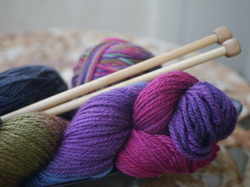 Some people say no knitting or crocheting photo is finished until you’ve taken the photo. No matter what kind of camera (or smart phone) you’re using to take a photo of a project – and no matter whether you just want to email a friend the photo, post it on Facebook or attract buyers on Ravelry or Etsy, the tips that follow can help you create a better photo of your work. Before you pick up that camera, be sure your project is well blocked (if appropriate), free of fuzz or stray fibers and is displayed without distracting or distorting wrinkles or folds.
0 Comments
Leave a Reply. |
SFV Knitting Guild News and Updates
Keep up to date with what's happening in the guild, as well as knitting news around town. CategoriesAll Guild Events Local Events Sales Archives
April 2021
|
|
If you have any questions, please reach out to us at [email protected].
|
Proudly powered by Weebly
|
 RSS Feed
RSS Feed